Abstract
The role of “leakage” of tubular fluid in anuria produced by mercury poisoning was studied in rats by micropuncture techniques. After an initial brisk diuresis, almost all animals were completely anuric 24 hours after HgCl2 injection. Lissamine green injected intravenously in the early stage of anuria appeared in the beginning of the proximal tubule, but the color became progressively lighter as the dye traversed the proximal convolutions. The dye was barely visible in the terminal segments of the proximal tubule; it did not appear at all in the distal tubules. These observations suggest that the proximal epithelium had become abnormally permeable to Lissamine green.
Tubular fluid to plasma inulin (TF/PIn) ratios and inulin clearance were measured in individual nephrons at three sites: early proximal tubule, late proximal tubule, and distal tubule. It was found that TF/PIn ratios were abnormally low in the late proximal and distal tubules. Inulin clearance was normal at the beginning of the proximal tubule but fell by more than 60% by the late proximal convolutions. Thus, the proximal tubule had also become permeable to inulin.
We conclude from these observations that anuria in mercury poisoning can occur in the presence of a normal glomerular filtration rate. The absence of urine flow appears to be due to complete absorption of the filtrate through an excessively permeable tubular epithelium. The driving force affecting this fluid absorption is probably the colloid oncotic pressure of the peritubular capillary blood.
Full text
PDF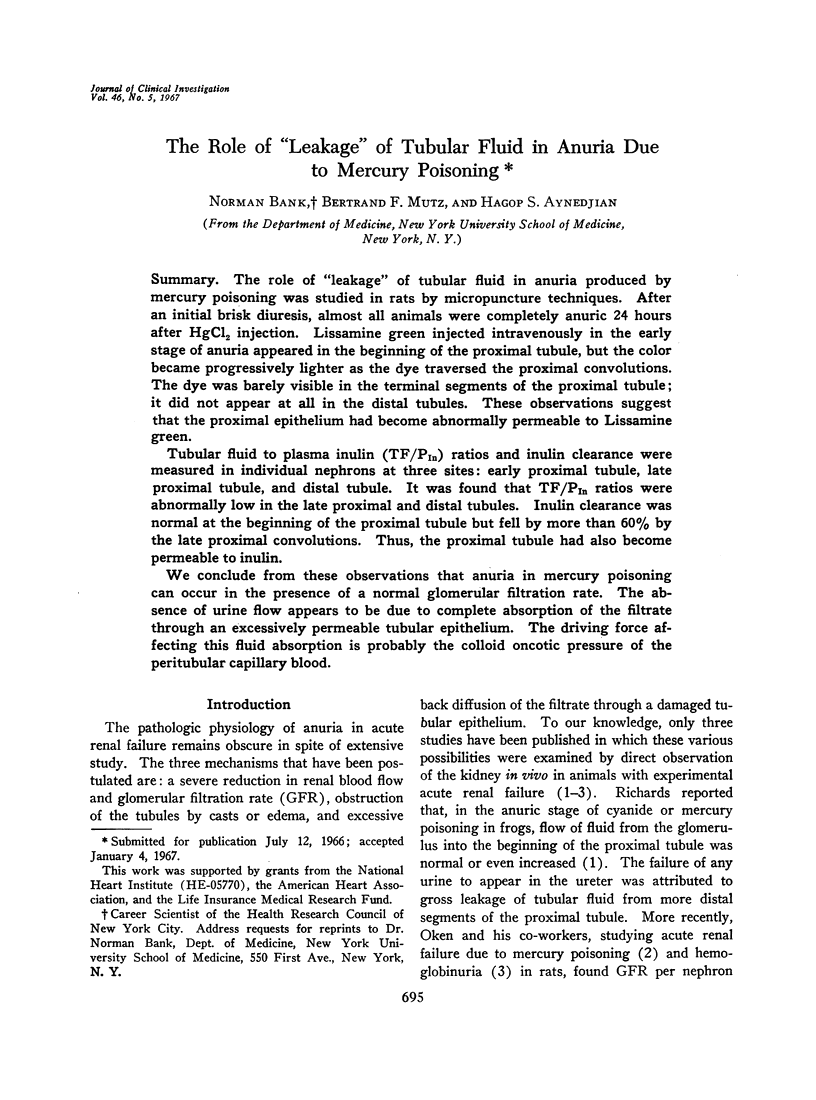
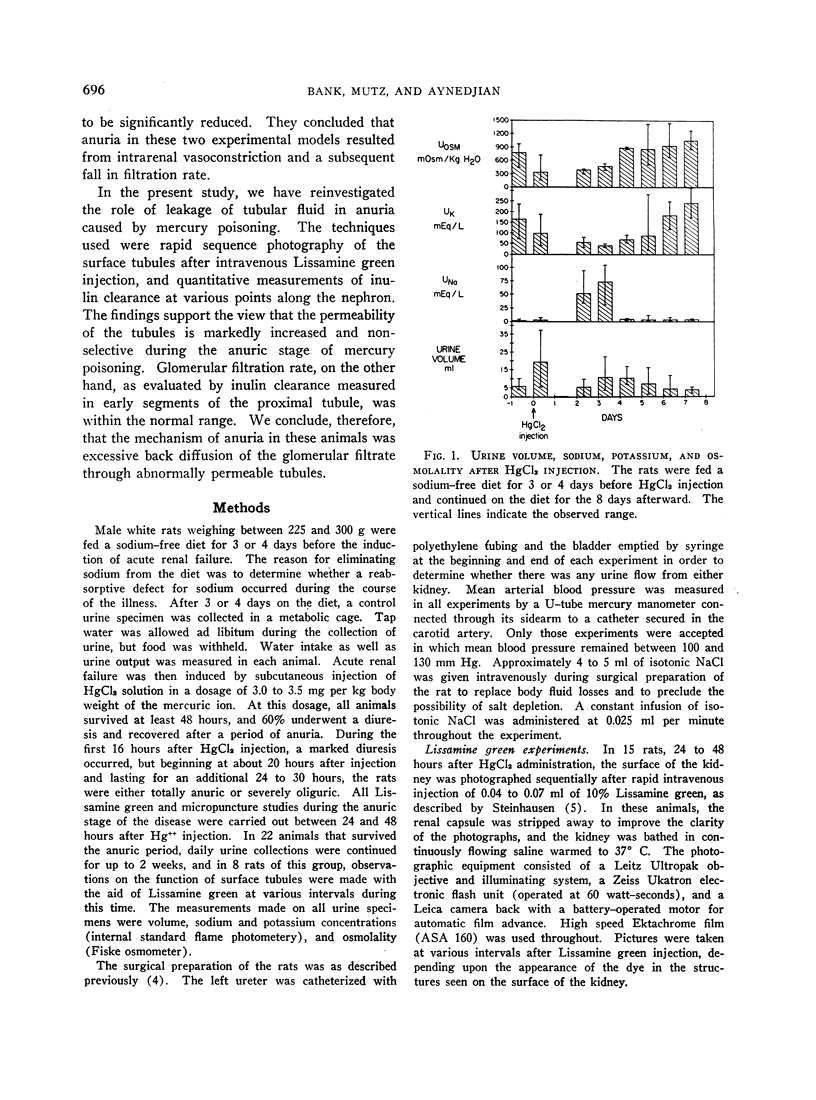
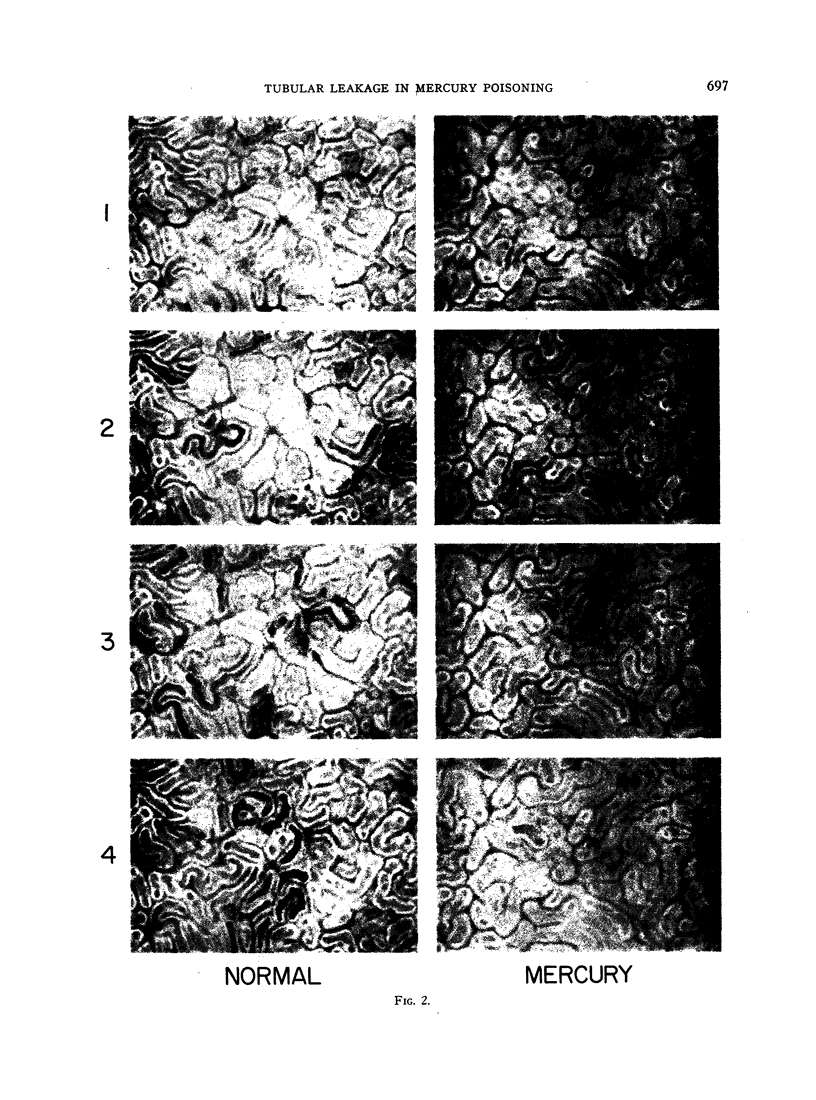
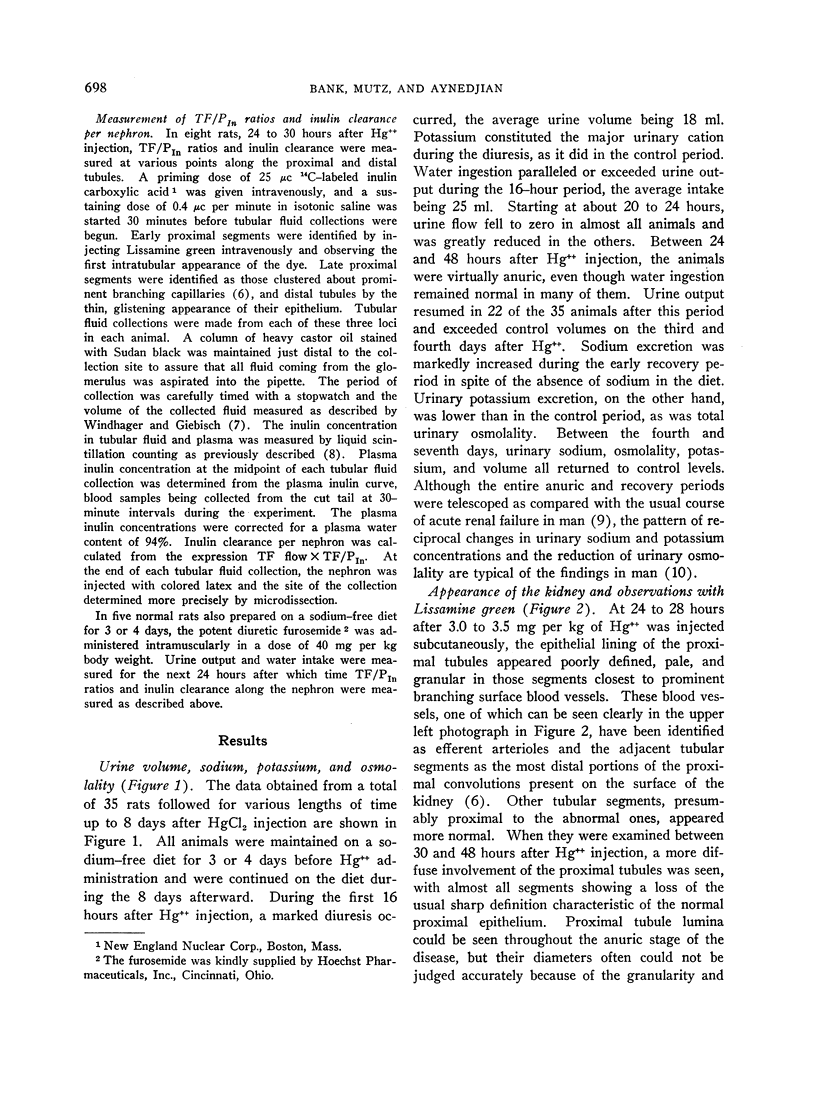
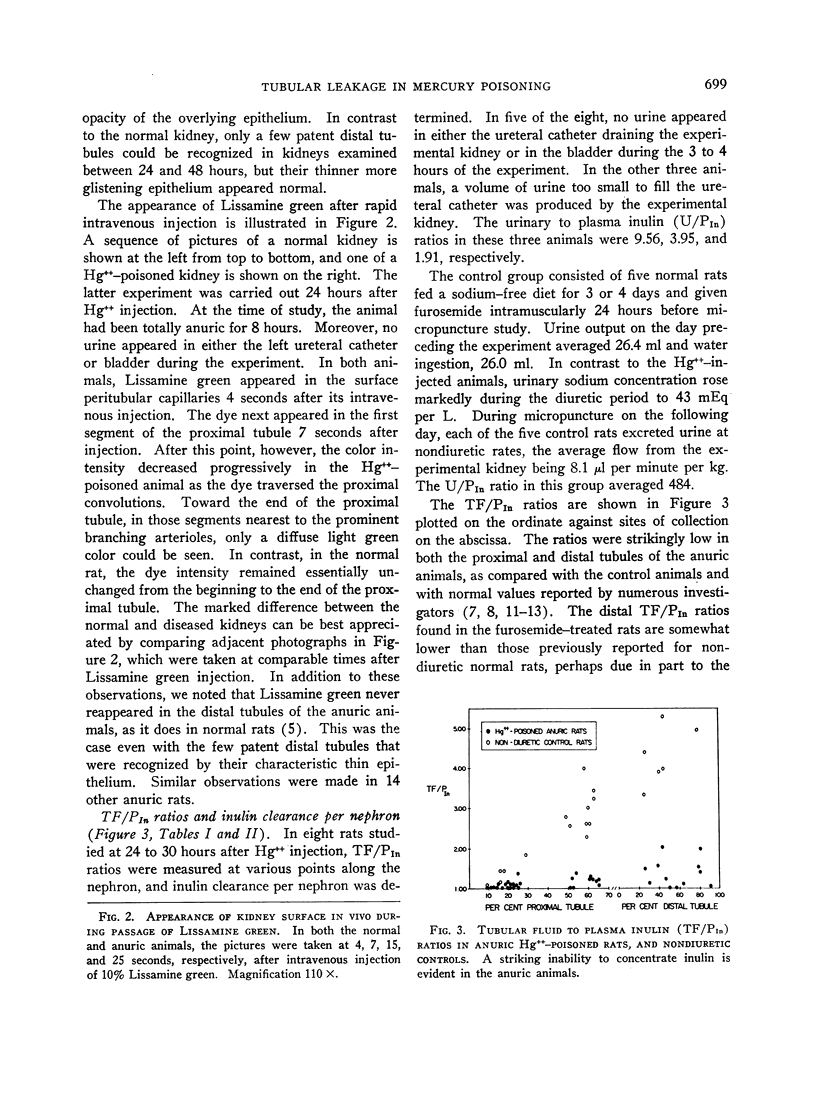
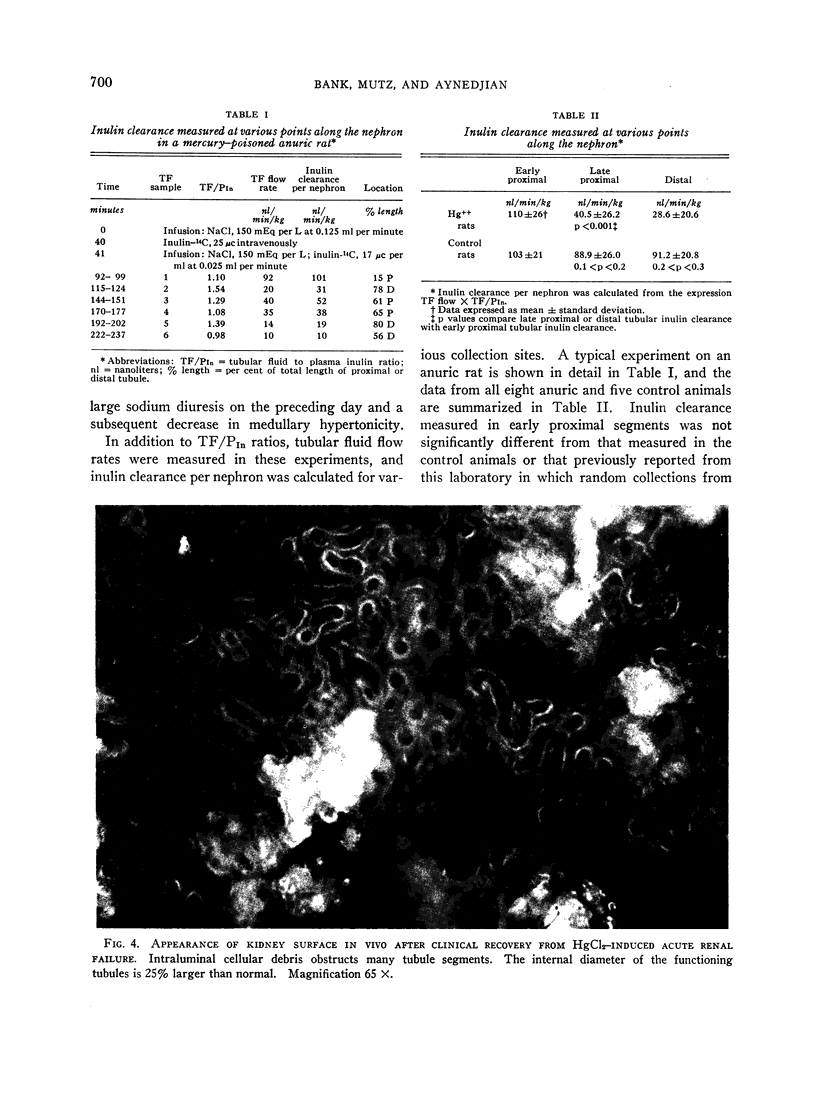
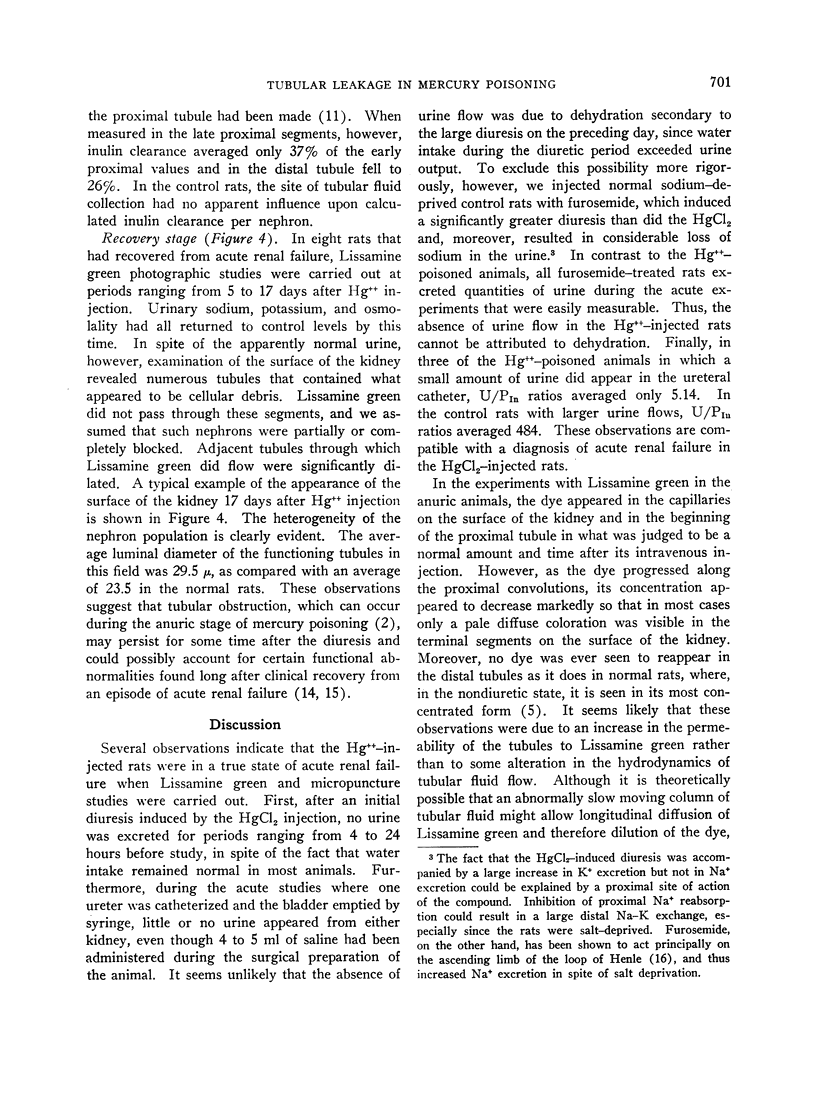
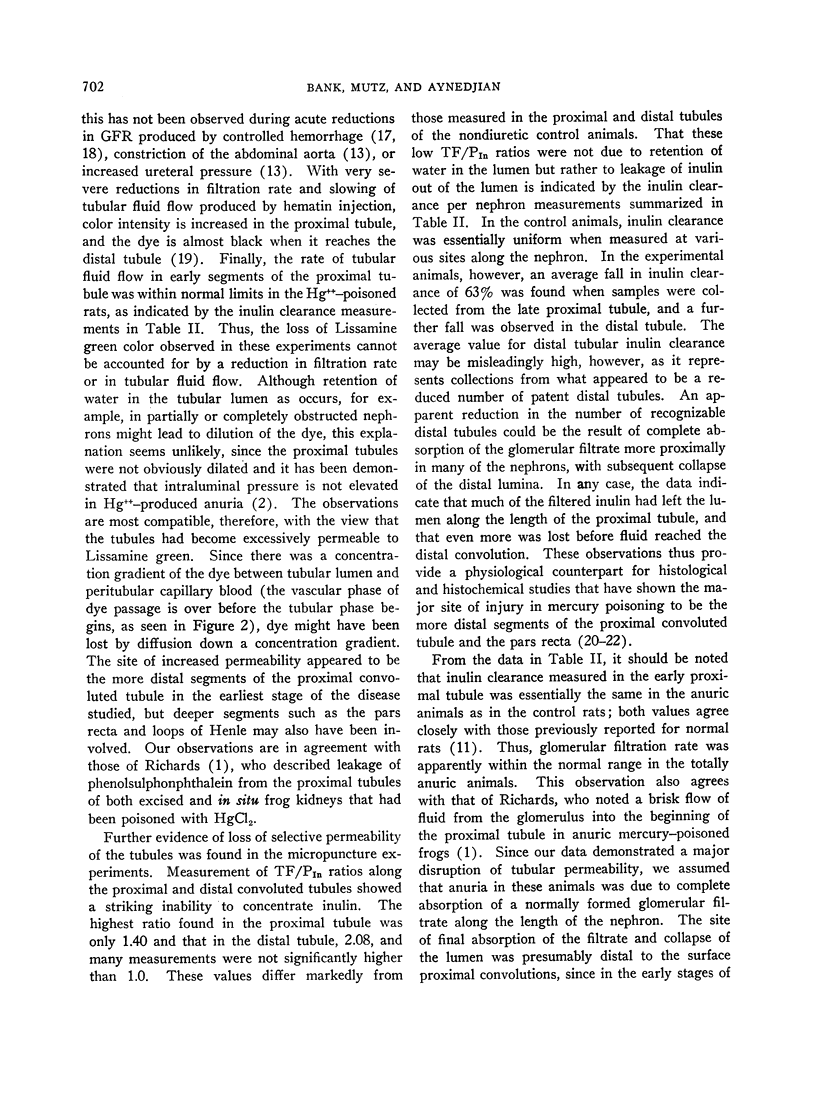
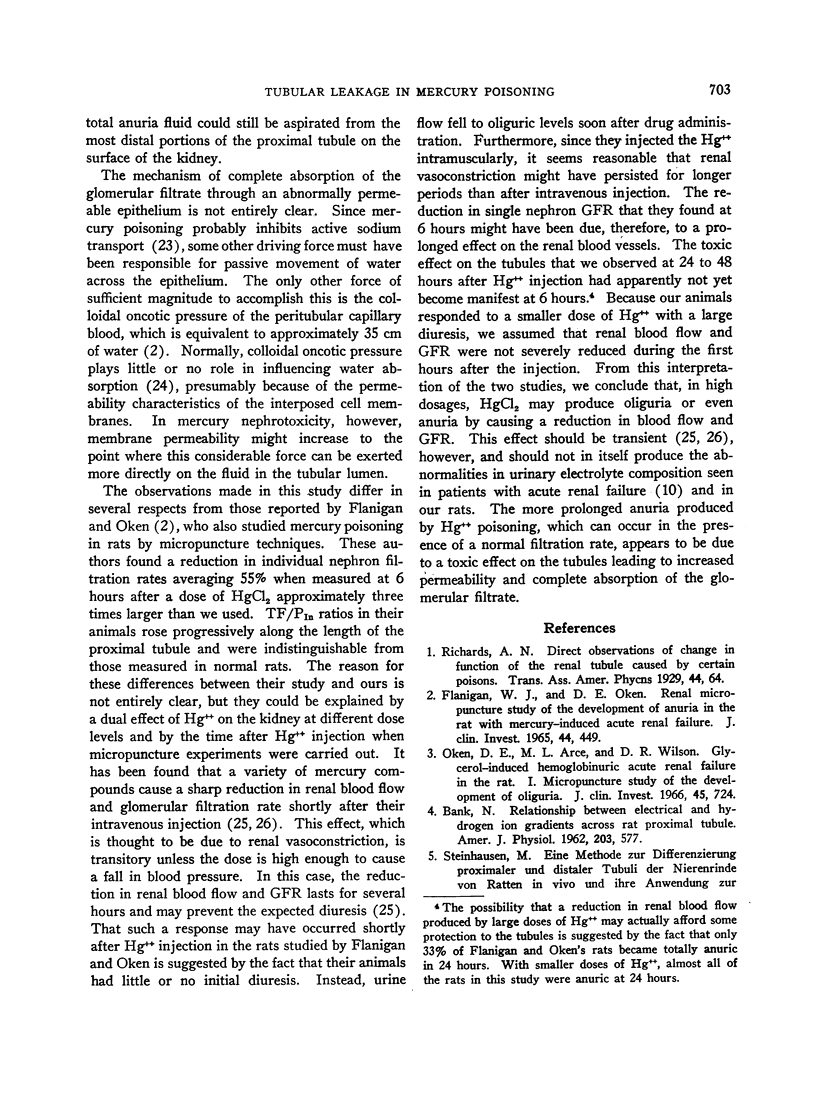
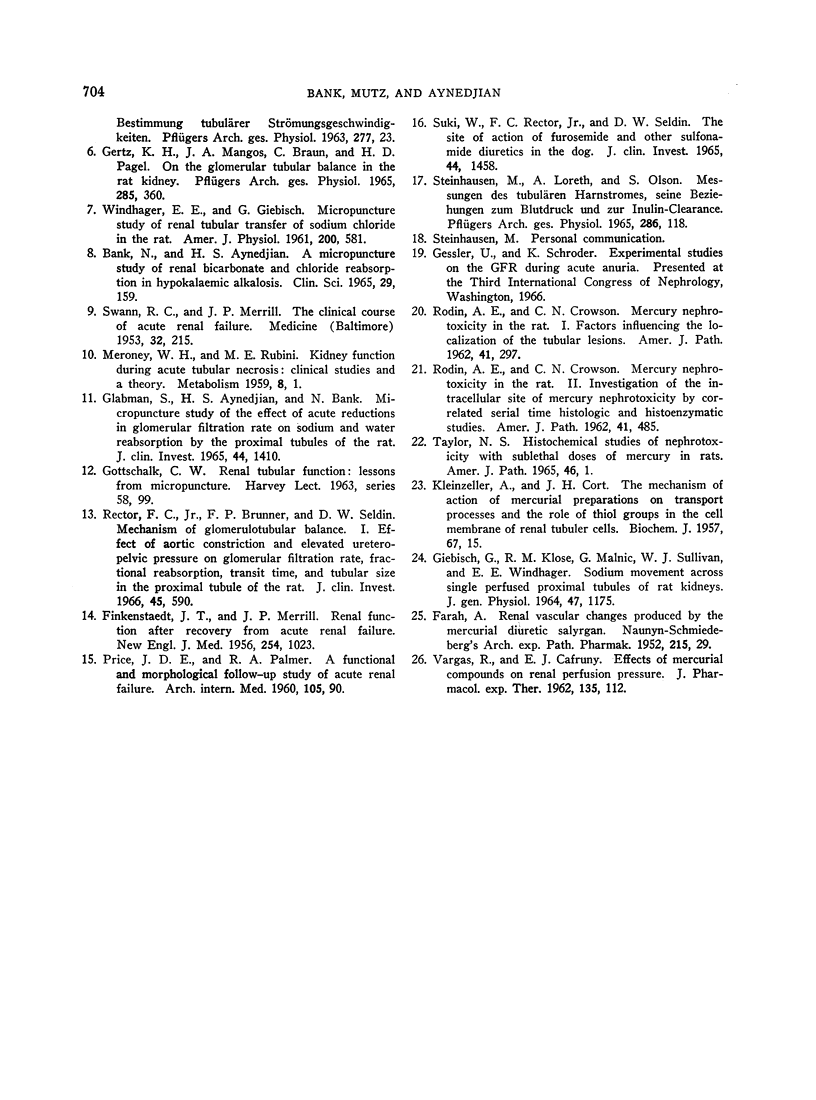
Images in this article
Selected References
These references are in PubMed. This may not be the complete list of references from this article.
- BANK N. Relationship between electrical and hydrogen ion gradients across rat proximal tubule. Am J Physiol. 1962 Sep;203:577–582. doi: 10.1152/ajplegacy.1962.203.3.577. [DOI] [PubMed] [Google Scholar]
- Bank N., Aynedjian H. S. A micropuncture study of renal bicarbonate and chloride reabsorption in hypokalaemic alkalosis. Clin Sci. 1965 Aug;29(1):159–170. [PubMed] [Google Scholar]
- FINKENSTAEDT J. T., MERRILL J. P. Renal function after recovery from acute renal failure. N Engl J Med. 1956 May 31;254(22):1023–1026. doi: 10.1056/NEJM195605312542203. [DOI] [PubMed] [Google Scholar]
- FLANIGAN W. J., OKEN D. E. RENAL MICROPUNCTURE STUDY OF THE DEVELOPMENT OF ANURIA IN THE RAT WITH MERCURY-INDUCED ACUTE RENAL FAILURE. J Clin Invest. 1965 Mar;44:449–457. doi: 10.1172/JCI105158. [DOI] [PMC free article] [PubMed] [Google Scholar]
- GIEBISCH G., KLOSE R. M., MALNIC G., SULLIVAN W. J., WINDHAGER E. E. SODIUM MOVEMENT ACROSS SINGLE PERFUSED PROXIMAL TUBULES OF RAT KIDNEYS. J Gen Physiol. 1964 Jul;47:1175–1194. doi: 10.1085/jgp.47.6.1175. [DOI] [PMC free article] [PubMed] [Google Scholar]
- GLABMAN S., AYNEDJIAN H. S., BANK N. MICROPUNCTURE STUDY OF THE EFFECT OF ACUTE REDUCTIONS IN GLOMERULAR FILTRATION RATE ON SODIUM AND WATER REABSORPTION BY THE PROXIMAL TUBULES OF THE RAT. J Clin Invest. 1965 Aug;44:1410–1416. doi: 10.1172/JCI105246. [DOI] [PMC free article] [PubMed] [Google Scholar]
- Gertz K. H., Mangos J. A., Braun G., Pagel H. D. On the glomerular tubular balance in the rat kidney. Pflugers Arch Gesamte Physiol Menschen Tiere. 1965 Sep 15;285(4):360–372. doi: 10.1007/BF00363236. [DOI] [PubMed] [Google Scholar]
- KLEINZELLER A., CORT J. H. The mechanism of action of mercurial preparations on transport processes and the role of thiol groups in the cell membrane of renal tubular cells. Biochem J. 1957 Sep;67(1):15–24. doi: 10.1042/bj0670015. [DOI] [PMC free article] [PubMed] [Google Scholar]
- MERONEY W. H., RUBINI M. E. Kidney function during acute tubular necrosis: clinical studies and a theory. Metabolism. 1959 Jan;8(1):1–15. [PubMed] [Google Scholar]
- Oken D. E., Arce M. L., Wilson D. R. Glycerol-induced hemoglobinuric acute renal failure in the rat. I. Micropuncture study of the development of oliguria. J Clin Invest. 1966 May;45(5):724–735. doi: 10.1172/JCI105387. [DOI] [PMC free article] [PubMed] [Google Scholar]
- PRICE J. D., PALMER R. A. A functional and morphological follow-up study of acute renal failure. Arch Intern Med. 1960 Jan;105:90–98. doi: 10.1001/archinte.1960.00270130106013. [DOI] [PubMed] [Google Scholar]
- RODIN A. E., CROWSON C. N. Mercury nephrotoxicity in the rat. 1. Factors influencing the localization of the tubular lesions. Am J Pathol. 1962 Sep;41:297–313. [PMC free article] [PubMed] [Google Scholar]
- RODIN A. E., CROWSON C. N. Mercury nephrotoxicity in the rat. 2. Investigation of the intracellular site of mercury nephrotoxicity by correlated serial time histologic and histoenzymatic studies. Am J Pathol. 1962 Oct;41:485–499. [PMC free article] [PubMed] [Google Scholar]
- Rector F. C., Jr, Brunner F. P., Seldin D. W. Mechanism of glomerulotubular balance. I. Effect of aortic constriction and elevated ureteropelvic pressure on glomerular filtration rate, fractional reabsorption, transit time, and tubular size in the proximal tubule of the rat. J Clin Invest. 1966 Apr;45(4):590–602. doi: 10.1172/JCI105373. [DOI] [PMC free article] [PubMed] [Google Scholar]
- SUKI W., RECTOR F. C., Jr, SELDIN D. W. THE SITE OF ACTION OF FUROSEMIDE AND OTHER SULFONAMIDE DIURETICS IN THE DOG. J Clin Invest. 1965 Sep;44:1458–1469. doi: 10.1172/JCI105252. [DOI] [PMC free article] [PubMed] [Google Scholar]
- SWANN R. C., MERRILL J. P. The clinical course of acute renal failure. Medicine (Baltimore) 1953 May;32(2):215–292. doi: 10.1097/00005792-195305000-00002. [DOI] [PubMed] [Google Scholar]
- Steinhausen M., Loreth A., Olson S. Messungen des tubulären Harnstromes, seine Beziehungen zum Blutdruck und zur Inulin-Clearance. Intravitalmikroskopische Untersuchungen an der Nierenrinde von Ratten und Katzen. Pflugers Arch Gesamte Physiol Menschen Tiere. 1965 Oct 12;286(2):118–141. [PubMed] [Google Scholar]
- TAYLOR N. S. HISTOCHEMICAL STUDIES OF NEPHROTOXICITY WITH SUBLETHAL DOSES OF MERCURY IN RATS. Am J Pathol. 1965 Jan;46:1–21. [PMC free article] [PubMed] [Google Scholar]
- VARGAS R., CAFRUNY E. J. Effects of mercurial compounds on renal perfusion pressure. J Pharmacol Exp Ther. 1962 Jan;135:112–119. [PubMed] [Google Scholar]
- WINDHAGER E. E., GIEBISCH G. Micropuncture study of renal tubular transfer of sodium chloride in the rat. Am J Physiol. 1961 Mar;200:581–590. doi: 10.1152/ajplegacy.1961.200.3.581. [DOI] [PubMed] [Google Scholar]











